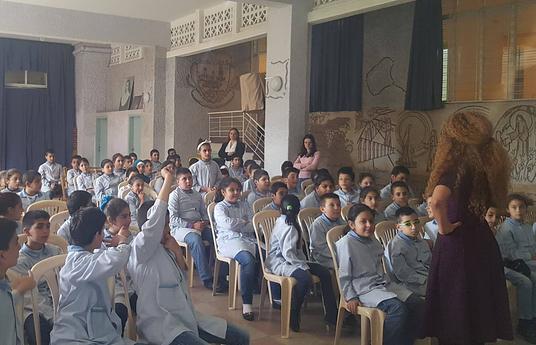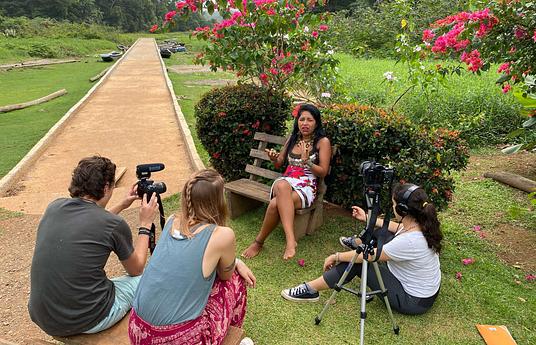We’ve never been as connected as we have been today, and it’s a good job too. The world’s leading scientists in a report for the UN say we have twelve years to make the changes needed to prevent disastrous consequences from climate change and to tackle such a huge problem we’re going to have to collaborate on a global level. So how do we trickle down this ability into the education system, to make sure every child is ready for a globalized world and has the skills needed to succeed in this new future?
Here are three ways to help make our schools more global.
Reimagining Education To Be More Global
One of the best ways to get children thinking on a global level is to break them out of their realm of experience. One high school taking this to the extreme is THINK Global School.
THINK Global School shakes up the traditional school system by taking students to four different countries each year to live and learn in. Through putting project and place-based learning at the heart of what they do, the school focuses on increasing student engagement and creating opportunities for real, authentic learning to take place.
Instead of focusing on knowledge acquisition, students work on community projects in their new host countries, learning from and engaging with the people who live there. Through expanding their lived experience, students gain an authentic global education and develop the skills, knowledge, and experience necessary to become the changemakers of tomorrow.
Of course, not everyone is in a position to travel the world with their school. However, THINK Global School forces us to reimagine how education can be done and encourages us to question whether there are opportunities for us all to incorporate non-traditional methods into our education systems to give them the contemporary, globally-minded boost they need.
Inviting The World Into The Classroom
You don’t have to travel the world to become acquainted with different cultures and ways of living. Global Oneness Project harnesses the power of storytelling to introduce children to the world outside of the classroom walls. Their free educational documentaries, photo essays, and articles feature some of the world’s biggest challenges.
Global Oneness Project’s beautiful educational materials help children to find the humanity in these challenges, from hearing directly from refugees about their experience having to leave their homeland and move somewhere new, to seeing the effects of climate change already happening around the world. The materials help educators to introduce these huge topics to children in an accessible, clearly communicated way so that these aren’t just challenges to overcome but stories to connect with, so we all feel the need to make the change necessary in the world.
Once we’re introduced to the lives of others and are able to connect with the issues in a humanistic, empathetic way, it becomes easier for us all to feel activated to make the changes needed to help our global community to thrive, no matter your location or situation. Through bringing the world into the classroom, we can help today’s students to visualize the impacts of issues such as climate change and activate them to develop a global, sustainability-focused mindset.
Creating Sustainable Education Ecosystems
In order to live in a globalized world, we’re all going to have to learn to live sustainably to make sure no part of the world is subjected to unlivable conditions. But in order to get students on board, first, we need to make sure our educators are properly trained so that our schools can help students to know how to lead a sustainable lifestyle.
Lebanese Organization for Green Schools is a non-profit that works to help whole schools to develop ethical actions that value both people and nature. These ethics form the decision-making process for everyday actions at the school, at both teacher and student level. LOGS administers a top-down approach to make this possible, starting with training administrators and staff on green practices, and covering the major departments such as languages, mathematics, sciences, and humanities. They also help schools to establish their own environmental student-led clubs to address specific issues that typically might come up at their school.
In Lebanon, youth make up one-quarter of the population, so educating them on sustainability will have a huge impact on the whole country’s society when they finish school. Plus, making sure people understand how to live sustainably is a particularly pressing issue for countries in the Middle East, who are predicted to suffer some of the worst effects from climate change and the landscape potentially becoming uninhabitable.
When looking at how to create sustainable schools we should look at the model employed by LOGS. Not only do we need to impart sustainability wisdom to our young people, but we need to make sure that adults at the school are educated on these issues too so we can make sure our schools resemble the sustainability mindset we need to see in the rest of our societies as well.


